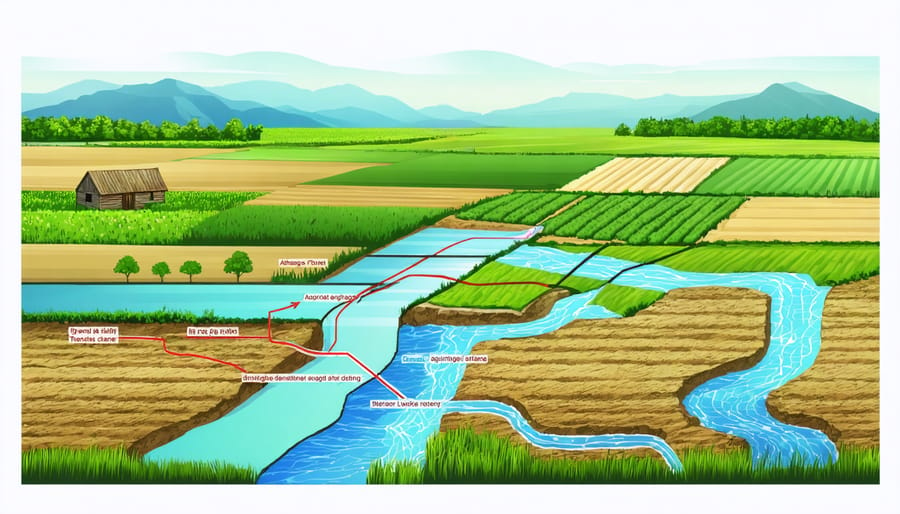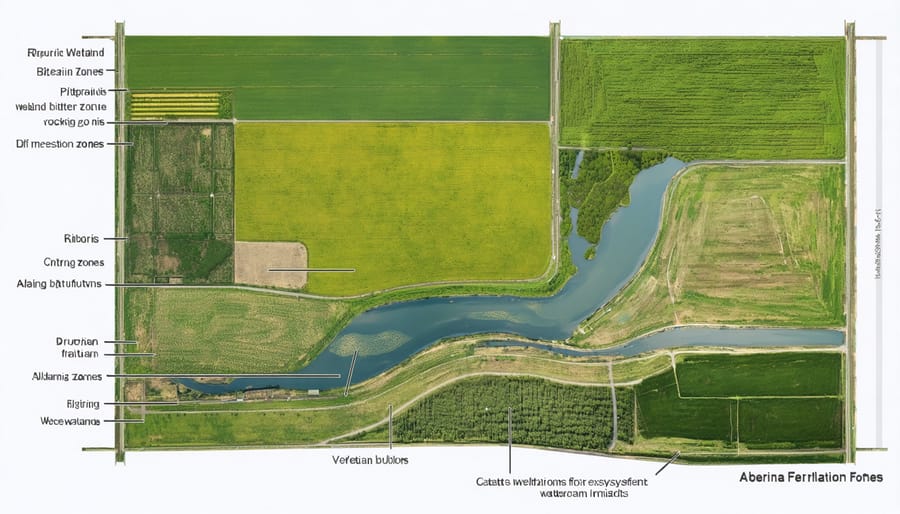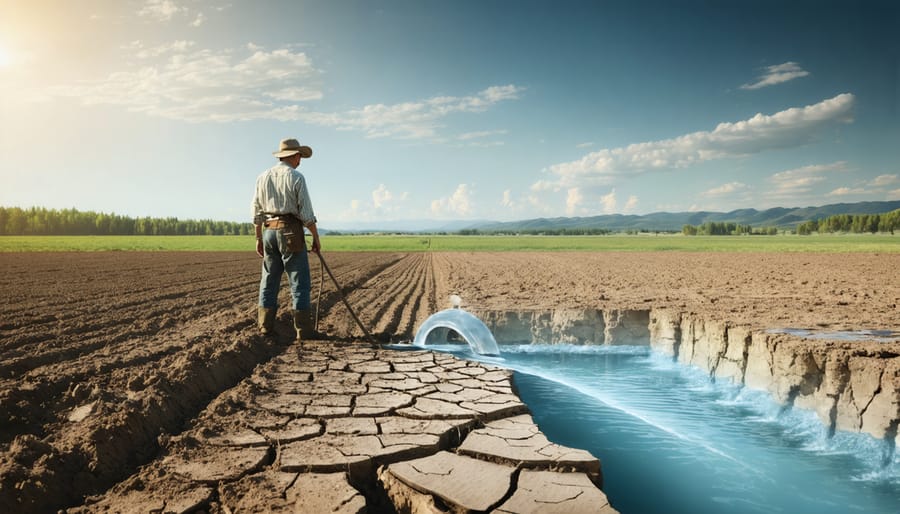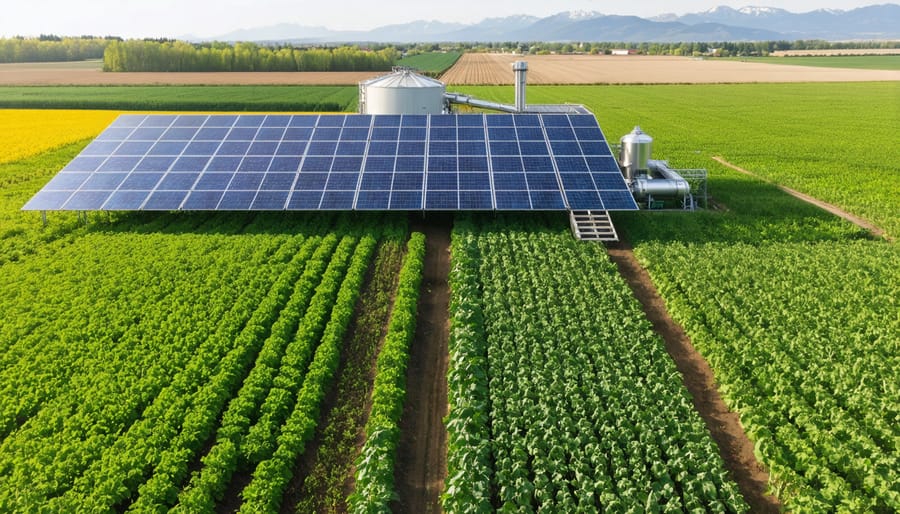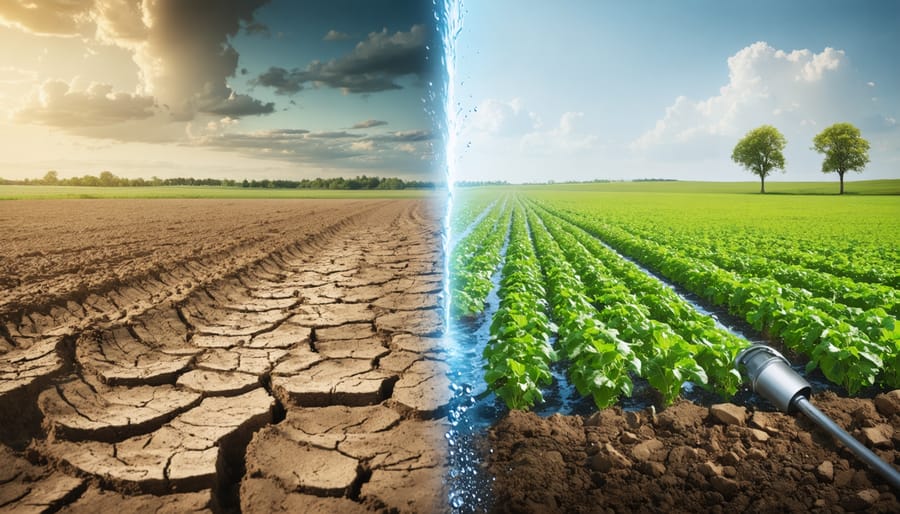Replenishing groundwater aquifers stands as a critical defense against climate change impacts on water resources, particularly for Alberta’s agricultural communities. Through natural and engineered processes, aquifer recharge ensures sustainable water availability for future generations while protecting soil health and crop yields. Recent studies across the Prairie provinces demonstrate that farms implementing structured recharge programs have maintained stable groundwater levels even during severe drought conditions, with some reporting up to 30% improvement in water retention capacity. As weather patterns become increasingly unpredictable, understanding and actively managing aquifer recharge represents not just an environmental responsibility, but a crucial investment in farm sustainability and economic resilience. By adopting proven recharge strategies, Canadian farmers are positioning themselves at the forefront of sustainable water management while securing their operations against future climate uncertainties.
Understanding Aquifer Recharge in Alberta’s Climate
Natural vs. Managed Recharge
In Alberta’s diverse landscape, natural groundwater filtration occurs through rainfall and snowmelt slowly seeping into underground aquifers through permeable soil layers. This process typically happens in areas with suitable geology, like the foothills region’s sandy soils and gravelly deposits.
However, natural recharge alone isn’t always sufficient for our agricultural needs, especially during dry periods. That’s where managed recharge comes in. Farmers across Alberta are implementing innovative solutions like infiltration basins and modified drainage systems to enhance aquifer replenishment. These controlled methods can increase recharge rates by up to 300% compared to natural processes.
The key difference lies in timing and volume control. While natural recharge depends on seasonal patterns, managed systems allow farmers to capture excess water during wet periods for use during dry spells. Many Alberta producers combine both approaches, using natural recharge areas on their land while supplementing with managed systems where needed. This balanced strategy helps maintain groundwater levels while respecting the natural water cycle.
Remember, successful recharge strategies often work best when they mimic and enhance natural processes rather than trying to replace them entirely.
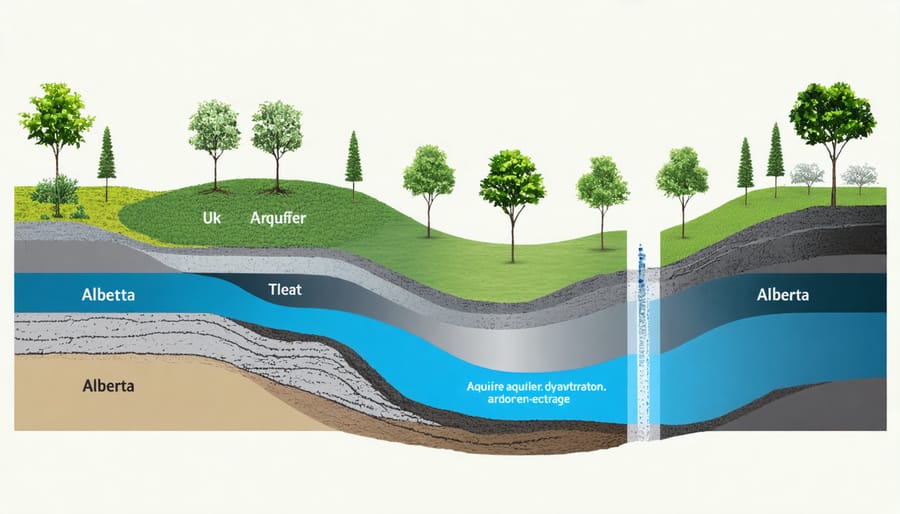
Local Aquifer Characteristics
Alberta’s groundwater landscape is as diverse as its surface terrain, featuring several major aquifer systems that serve our agricultural communities. The Paskapoo Formation, stretching along the foothills, stands out as one of our most productive aquifers, with excellent natural recharge potential due to its sandstone composition and extensive fracture networks.
In central Alberta, the Beverly Channel and Viking aquifers provide crucial water resources for farming operations. These glacial-channel aquifers typically recharge more quickly than deeper formations, especially during spring snowmelt and heavy rainfall events.
The Medicine Hat aquifer system, serving southeastern Alberta, demonstrates varying recharge rates depending on local soil conditions and precipitation patterns. Recent studies by Alberta Agriculture show that areas with sandy loam soils can achieve recharge rates up to 100 millimetres per year under optimal conditions.
Our prairie regions benefit from the Milk River Aquifer, though it requires careful management due to slower natural recharge. Local farmers have found success by implementing managed recharge practices, particularly in areas where the aquifer is closer to the surface.
Understanding these local characteristics helps us develop targeted recharge strategies that work with, rather than against, our natural systems.
Practical Recharge Methods for Alberta Farms
Surface Water Capture Systems
Surface water capture systems are essential components of effective water conservation strategies and play a vital role in maintaining healthy aquifers across Alberta’s agricultural landscape. These systems work by collecting runoff from rainfall and snowmelt, directing it to designated recharge zones where water can naturally filter into underground aquifers.
Common capture methods include contour trenches, which follow the natural slope of the land and slow water movement, allowing more time for ground absorption. These trenches, typically 1-2 metres wide and 0.5 metres deep, have proven particularly effective in the rolling prairies of central Alberta.
Retention ponds are another valuable tool, serving as temporary storage areas during heavy precipitation events. These ponds, when strategically placed in natural depressions, can hold thousands of litres of water that gradually seep into the ground. Local farmer Dave Thompson from Red Deer County reports that his 2-hectare retention pond has significantly improved soil moisture levels in surrounding fields while contributing to aquifer recharge.
Modified drainage systems, including controlled tile drainage, allow farmers to manage water flow actively. By adjusting outlet heights seasonally, excess water can be retained during drier periods rather than immediately draining away. This approach has shown promising results in regions like Lacombe County, where producers have noticed more consistent groundwater levels throughout the growing season.
For optimal results, these systems should be integrated with other land management practices such as cover cropping and reduced tillage, which improve soil structure and water infiltration rates. Conservation authorities recommend consulting local watershed experts when planning these systems to ensure they align with regional hydrology patterns and regulations.
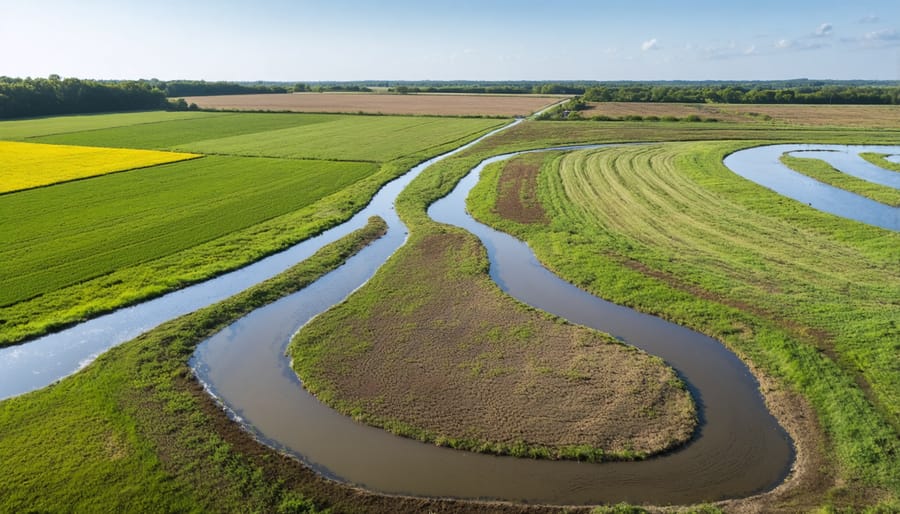
Infiltration Enhancement Techniques
Improving water infiltration into your soil is crucial for successful aquifer recharge. Here in Alberta, we’ve found several effective techniques that work well with our unique soil conditions and climate.
Cover cropping has proven particularly successful, with crops like clover and rye creating deep root channels that help water penetrate the soil. Many farmers in Southern Alberta report significant improvements in soil structure after just two seasons of cover crop implementation.
Reduced tillage practices are another game-changer. By minimizing soil disturbance, you maintain natural soil structure and preserve beneficial earthworm populations. These helpful creatures create channels that can increase water infiltration rates by up to 50%, according to research from the University of Alberta.
Managing crop residue is equally important. Leaving at least 30% crop residue on your fields helps protect the soil surface from rain impact, prevents crusting, and slows water movement across the land. This gives water more time to soak in rather than run off.
Consider implementing contour farming and buffer strips along field edges. These practices slow water movement and create natural infiltration zones. Several farms near Lethbridge have successfully used grass waterways to direct excess water to designated infiltration areas.
For optimal results, regular soil testing is essential to monitor organic matter content and soil structure. Many successful Alberta farmers combine these techniques with periodic deep ripping in compacted areas, particularly after wet harvests. Remember to time these operations carefully to avoid causing additional compaction issues.
Through consistent application of these practices, you’ll notice improved soil moisture retention and more effective groundwater recharge over time.
Success Stories: Alberta Farmers Leading the Way
The Brooks County Initiative
In 2018, a group of farmers in Brooks County, Alberta, launched a pioneering community-led aquifer management project that has since become a model for sustainable groundwater practices across the province. The initiative began when local farmer Sarah Thompson noticed declining water levels in her irrigation wells and rallied neighbouring farms to take collective action.
Working with hydrogeologists from the University of Alberta, the group mapped their local aquifer system and identified key recharge zones across their properties. They then developed a coordinated approach to enhance natural recharge through strategic land management practices.
The group implemented a rotation system for cover crops, ensuring year-round soil coverage in critical recharge areas. They also constructed a network of small retention ponds and swales designed to slow surface water movement and increase infiltration rates. Particularly innovative was their development of “recharge corridors” – strips of land specifically managed to maximize water penetration during spring melt and summer storms.
After three years, monitoring wells showed a 15% increase in aquifer levels compared to similar areas outside the project zone. The initiative has since expanded to include 28 farms covering 12,000 hectares, with participating farmers reporting improved drought resilience and more stable well yields.
The Brooks County success story demonstrates how local knowledge combined with scientific expertise can create practical, effective solutions for groundwater management. The project continues to evolve, with participants sharing their experiences through regular workshops and field days.
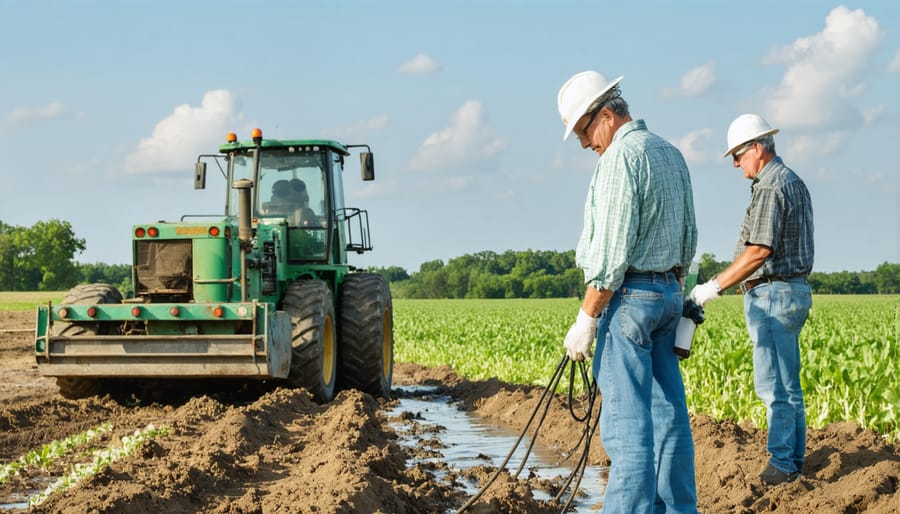
Red Deer Valley Project
The Red Deer Valley Project stands as a shining example of how Alberta farmers are successfully implementing groundwater recharge systems. Located just east of Red Deer, this collaborative initiative involves 12 family farms working together to enhance aquifer health while maintaining productive agricultural operations.
In 2019, participating farmers began installing a network of small-scale recharge basins across their properties. These basins, ranging from 0.5 to 2 hectares in size, capture spring runoff and summer rainfall, allowing water to slowly percolate into the underlying aquifer. The system’s design incorporates existing natural depressions and strategic placement near areas with good soil infiltration rates.
Project coordinator Sarah Thompson notes, “We’ve seen remarkable results in just three years. Water levels in monitoring wells have risen by an average of 1.2 metres, and participating farms report more stable groundwater supplies during dry periods.”
The initiative also demonstrates the economic benefits of recharge systems. Farmers have reduced their irrigation costs by approximately 15% and maintained crop yields even during the drought of 2021. The project incorporates innovative monitoring technology, including soil moisture sensors and automated water level tracking, helping farmers make informed decisions about water management.
The Red Deer Valley Project serves as a practical model for other Alberta communities, showing how local farmers can work together to build climate resilience while preserving their agricultural heritage.
Implementation Guide and Resources
Getting Started: Assessment and Planning
Before diving into a groundwater recharge project, it’s essential to assess your land’s potential and develop a solid plan. Here in Alberta, we’ve seen successful projects start with thorough groundwork and community consultation.
First, evaluate your property’s geological characteristics. Look for areas with permeable soils and natural depressions where water naturally collects. Sandy or gravelly soils typically work best for recharge projects. You’ll want to review existing well logs and geological surveys, which are available through Alberta Environment and Parks.
Next, assess your water sources. Consider seasonal rainfall patterns, snowmelt volumes, and any surface water rights you may hold. It’s helpful to track your current water usage and estimate future needs. Remember, successful recharge projects often combine multiple water sources throughout the year.
Connect with your local watershed group or agricultural fieldman. They can provide valuable insights about similar projects in your area and help you navigate the regulatory requirements. Many Alberta farmers have found that collaborative planning with neighbours leads to more effective recharge strategies.
Create a monitoring plan to track water levels and quality. Consider installing observation wells and establishing baseline measurements before starting your project. Local hydrogeologists can help determine the best monitoring locations and methods.
Finally, develop a budget and timeline that accounts for both initial construction and long-term maintenance. Many Alberta farmers find it helpful to start with a smaller pilot project before scaling up their recharge efforts.
Available Support and Funding
Several funding programs and support resources are available to Alberta farmers interested in implementing groundwater aquifer recharge projects. The Canadian Agricultural Partnership (CAP) offers cost-sharing grants of up to 70% for water management initiatives, including aquifer recharge systems and monitoring equipment.
The Agricultural Water Engineers Program, run by Alberta Agriculture and Irrigation, provides free technical consultations and project planning assistance. Their experts can help assess your land’s suitability for recharge projects and develop implementation strategies tailored to your specific needs.
Local watershed stewardship groups often provide matching funds for environmental projects. The Watershed Resiliency and Restoration Program (WRRP) specifically supports projects that enhance natural watershed functions and improve water storage capacity.
The Agricultural Research and Extension Council of Alberta (ARECA) offers networking opportunities and knowledge-sharing sessions where farmers can learn from peers who have successfully implemented recharge projects. They also provide access to specialized equipment through their tool-sharing program.
For Indigenous agricultural producers, additional funding is available through the First Nations Water Management program, which covers up to 90% of project costs.
Contact your local agricultural fieldman or visit the Alberta Agriculture and Irrigation office to learn more about these opportunities and get assistance with application processes. Remember that funding availability may vary by season and region, so early planning is recommended.
As stewards of our land, Alberta’s farmers have a unique opportunity to lead the way in groundwater aquifer recharge management. Throughout this article, we’ve explored how these vital underground reservoirs support our agricultural communities and the practical steps we can take to protect and replenish them.
Remember that every action counts, whether it’s implementing cover crops, adopting efficient irrigation practices, or creating retention ponds. These measures not only help recharge our aquifers but also build resilience against drought and contribute to the long-term sustainability of our farms.
The success stories we’ve shared from fellow Alberta farmers demonstrate that sustainable aquifer management is not just an environmental necessity—it’s a smart business decision. By working together and sharing our experiences, we can develop solutions that work for our unique climate and soil conditions.
We encourage you to start small, perhaps by monitoring your water usage or consulting with local agricultural extension services about recharge projects suitable for your land. Consider joining local watershed management groups or participating in community-led initiatives. The resources and support are available—you just need to take that first step.
Together, we can ensure that future generations of Canadian farmers have access to the water resources they need while maintaining the health of our precious aquifers. Your role in this effort is vital, and the time to act is now.

